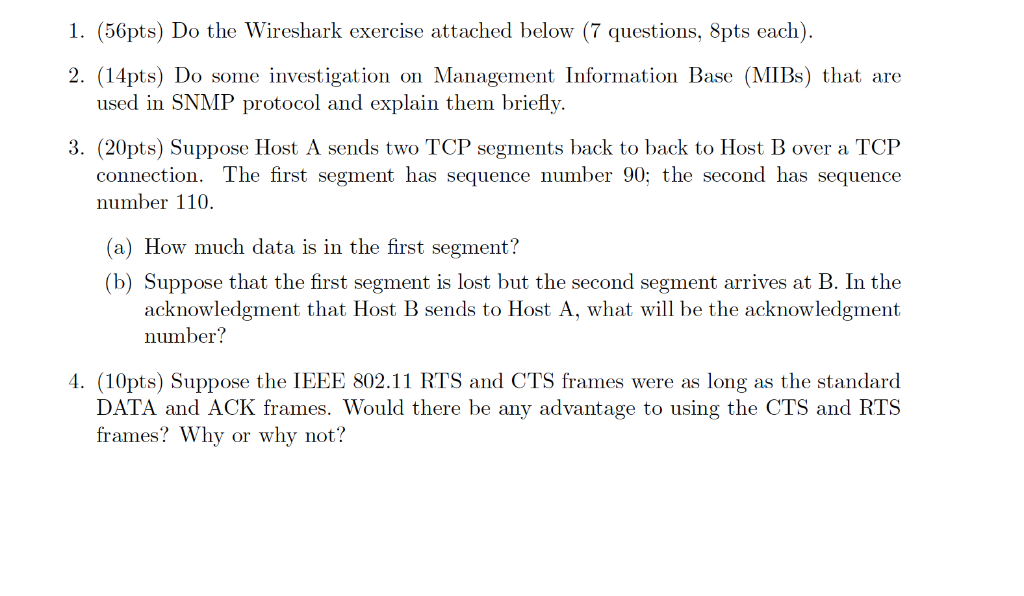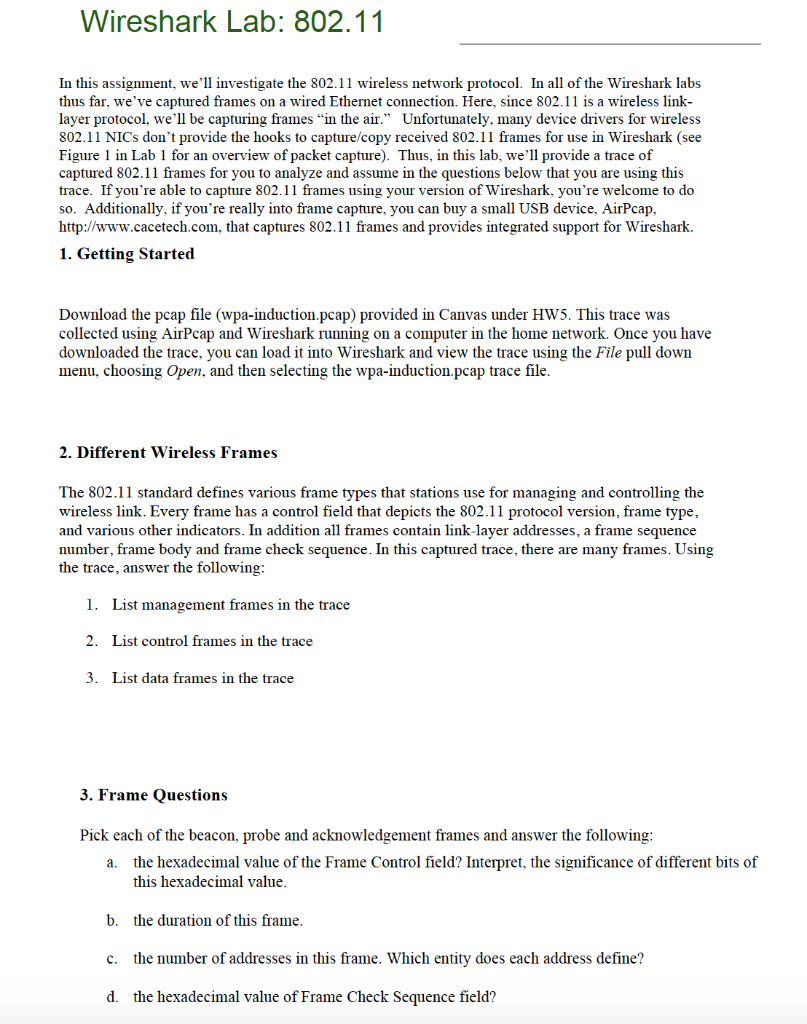

1. (56pts) Do the Wireshark exercise attached below (7 questions, 8pts each). 2. (14pts) Do some investigation on Management Information Base (MIBs) that are used in SNMP protocol and explain them briefly 3. (20pts) Suppose Host A sends two TCP segments back to back to Host B over a TCP connection. The first segment has sequence number 90; the second has sequence number 110 (a) How much data is in the first segment? (b) Suppose that the first segment is lost but the second segment arrives at B. In the acknowledgment that Host B sends to Host A, what will be the acknowledgment number? 4. (10pts) Suppose the IEEE 802.11 RTS and CTS frames were as long as the standard DATA and ACK frames. Would there be any advantage to using the CTS and RTS frames? Why or why not? Wireshark Lab: 802.11 In this assignment, we'll investigate the 802.11 wireless network protocol. In all of the Wireshark labs thus far, we've captured frames on a wired Ethernet connection. Here, since 802.11 is a wireless link layer protocol, we'll be capturing frames "in the air." Unfortunately, many device drivers for wireless 802.11 NICs don't provide the hooks to capture/copy received 802.11 frames for use in Wireshark (see Figure 1 in Lab 1 for an overview of packet capture). Thus, in this lab, we'l1 provide a trace of captured 802.11 frames for you to analyze and assume in the questions below that you are using this trace. If you're able to capture 802.11 frames using your version of Wireshark, you're welcome to do so. Additionally, if you're really into frame capture, you can buy a small USB device, AirPcap http://www.cacetech.com, that captures 802.11 frames and provides integrated support for Wireshark 1. Getting Started Download the pcap file (wpa-induction.pcap) provided in Canvas under HW5. This trace was collected using AirPcap and Wireshark running on a computer in the home network. Once you have downloaded the trace, you can load it into Wireshark and view the trace using the File pull down menu, choosing Open, and then selecting the wpa-induction.pcap trace file 2. Different Wireless Frames The 802.11 standard defines various frame types that stations use for managing and controlling the wireless link. Every frame has a control field that depicts the 802.11 protocol version, frame type, and various other indicators. In addition all frames contain link-layer addresses, a frame sequence number, frame body and frame check sequence. In this captured trace, there are many frames. Using the trace, answer the following 1. 2. 3. List management frames in the trace List control frames in the trace List data frames in the trace 3. Frame Questions Pick each of the beacon, probe and acknowledgement frames and answer the following a. the hexadecimal value of the Frame Control field? Interpret, the significance of different bits of this hexadecimal value the duration of this frame the number of addresses in this frame. Which entity does each address define? the hexadecimal value of Frame Check Sequence field? b. c. d








